German Army Pith Helmet (2nd version)
CATEGORY: Version
SKU: 20.GOR.01.02.02.001.001
Estimated market value:
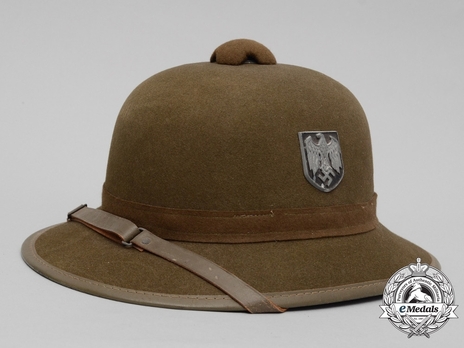
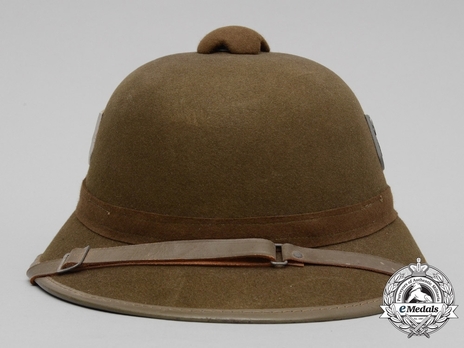
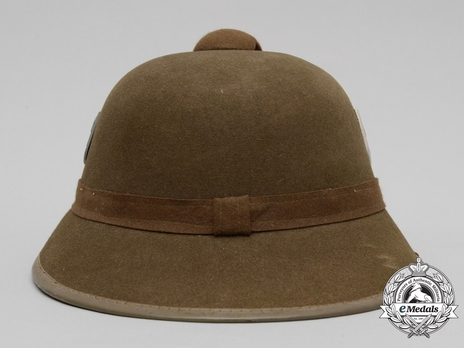
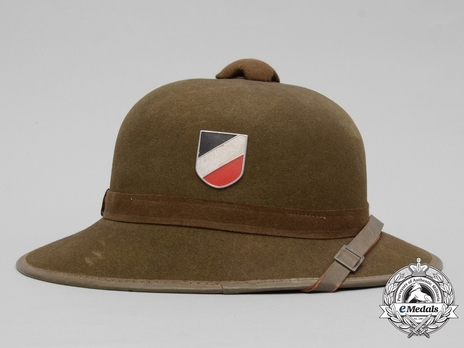
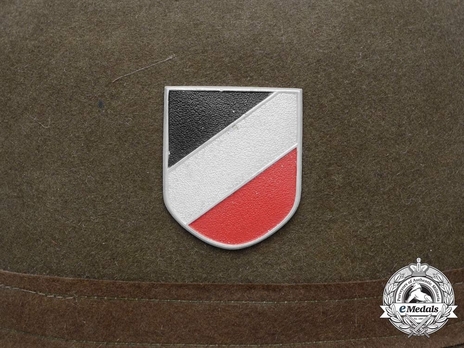
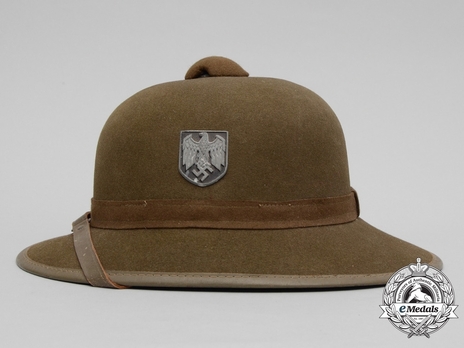
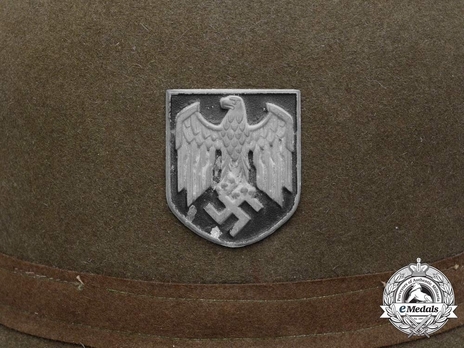
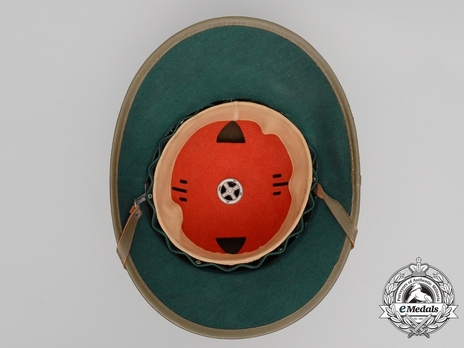
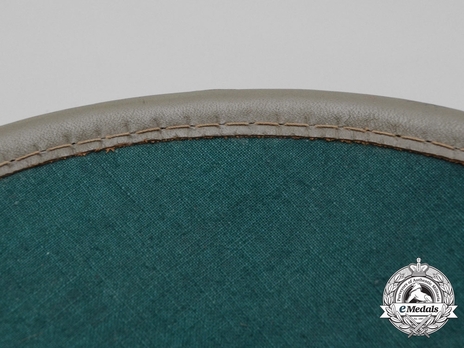
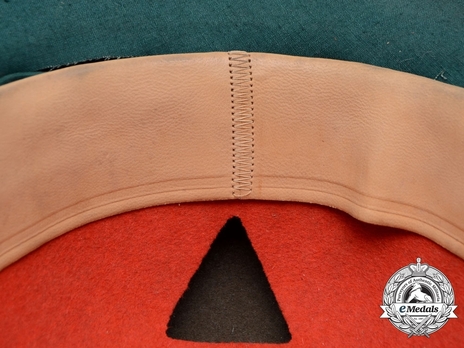
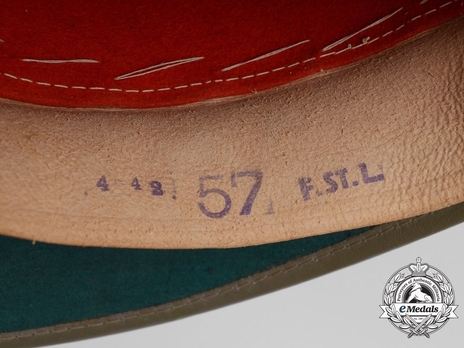
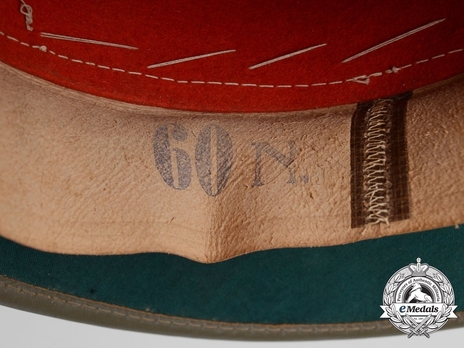
Estimated market value:
A second pattern 1942, size 57, Wehrmacht Afrika Korps pith helmet; solid construction with green felt exterior and red felt interior with air vents; air vent finial; zinc tri-colour shield on right side and shield of a German eagle clutching a swastika on left side; olive green leather band trim surrounding the edge of helmet with matching olive green leather chin strap; tan leather sweatband unmarked on the outside but marked “60 N”, “4-42”, and ”57 F.ST.L” on the inside of sweatband; interior held in place with cotter pins; better than extremely fine condition.
The helmet of the Army became one of the most recognisable items of the German soldier in the Second World War, just like the “Pickelhaube”, the spiked helmet, had come to be a symbol associated with the German Imperial Army. However, where the spiked helmet fulfilled more of a ceremonial function, the steel helmet was intended as a practical item for the battlefield, designed to protect and shield its wearer from grenade splinters and other forms of shrapnel.
Helmets will vary in appearance due to production by different factories and subcontractors, and changes in specifications.
The Pith Helmet had been developed for tropical regions and was in use since the days of colonialism. Its main feature was that it was significantly more light in weight than a regular helmet. During the Second World War it was worn by enlisted men and officers of all ranks.
It has a pressed cork body. There are also rarer versions made of wicker or straw. It usually has a leather sweatband and a leather chinstrap. On this helmet the tricoloured and eagle shield decals weren’t painted versions, like on the steel helmets, but badges pinned to the helmet.
There are two versions of the pith helmet. The first version is covered with a lightweight canvas which is either green or tan in colour. The dome is covered by six pieces of cloth sewn together, with a cloth band at the base to cover the sewn junction.
The second version instead has a one-piece seamless cover made of felt.

Comments
Sign in to comment and reply.


Scroll Top